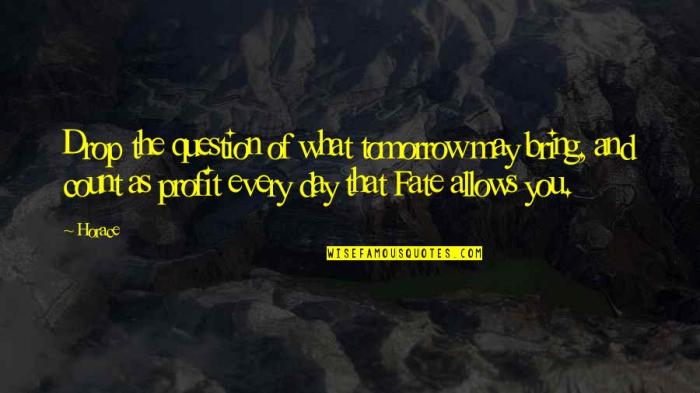Fahrenheit 451 chapter 1 quiz – Embark on an exploration of Fahrenheit 451 Chapter 1 through our captivating quiz, designed to ignite your understanding of this literary masterpiece. As you navigate through thought-provoking questions, immerse yourself in the dystopian world created by Ray Bradbury, uncovering the complexities of Guy Montag’s character and the profound themes that permeate the novel.
Our quiz delves into the intricate details of the chapter, examining Montag’s motivations, conflicts, and relationships. It unveils the significance of symbolism and imagery, highlighting their contribution to the chapter’s atmosphere and meaning. By engaging with our quiz, you will gain a deeper appreciation for Bradbury’s dystopian vision and its enduring relevance in contemporary society.
Context of Fahrenheit 451 Chapter 1

Chapter 1 of Fahrenheit 451 sets the stage for the dystopian world in which the novel is set. It introduces the protagonist, Guy Montag, a “fireman” whose job is to burn books. The chapter establishes the novel’s central themes of censorship, individuality, and the power of literature.
Significance of Chapter 1
Chapter 1 is crucial to understanding the novel’s premise and the development of its characters. It introduces the oppressive society that Montag lives in, where books are banned and independent thought is discouraged. The chapter also foreshadows Montag’s journey of self-discovery and his eventual rebellion against the system.
Character Analysis

Guy Montag, the protagonist of Fahrenheit 451, is a complex and conflicted character. As a fireman, he is tasked with burning books, a job that he initially accepts without question. However, as the novel progresses, Montag begins to question his beliefs and the society he lives in.
Character Traits
Montag is a kind and compassionate man. He is troubled by the suffering he sees in the world, and he longs for a more meaningful life. However, he is also afraid of change and of standing out from the crowd.
As a result, he often suppresses his doubts and goes along with the status quo.
Motivations
Montag’s motivations are complex and evolving. Initially, he is motivated by a desire to do his job well and to please his superiors. However, as he begins to question his beliefs, he becomes motivated by a desire to find truth and meaning in his life.
He is also motivated by a growing love for Clarisse McClellan, a young woman who challenges his assumptions about the world.
Conflicts
Montag faces both internal and external conflicts throughout the novel. Internally, he struggles with his doubts about his job and his society. Externally, he faces conflict with his superiors, who are determined to keep him in line. He also faces conflict with Mildred, his wife, who is a product of the consumer culture that he is beginning to reject.
Relationship with Clarisse McClellan
Montag’s relationship with Clarisse McClellan is a turning point in his life. Clarisse is a free-spirited young woman who challenges Montag’s assumptions about the world. She encourages him to think for himself and to question the status quo. Montag falls in love with Clarisse, and her death has a profound impact on him.
Themes and Motifs in Chapter 1

Chapter 1 of Fahrenheit 451introduces several key themes and motifs that will be developed throughout the novel. These include the dangers of censorship, the importance of critical thinking, and the power of imagination.
One of the most important themes in the novel is the danger of censorship. The firemen in Fahrenheit 451are tasked with burning books, which are seen as a threat to society. This act of censorship is a way of controlling the population and preventing them from thinking for themselves.
Another important theme in the novel is the importance of critical thinking. Montag, the protagonist of the novel, begins to question the society he lives in after he meets Clarisse McClellan. Clarisse is a free-thinking individual who encourages Montag to think for himself.
This is a dangerous thing to do in a society that values conformity above all else.
Finally, the novel also explores the power of imagination. Montag’s love of books and his ability to imagine a different world are what ultimately lead him to rebel against the society he lives in. Imagination is a powerful force that can change the world.
Motifs
In addition to these themes, Chapter 1 of Fahrenheit 451also introduces several motifs that will be developed throughout the novel. These include:
- Fire:Fire is a destructive force that can be used to destroy both physical objects and ideas.
- Water:Water is a life-giving force that can be used to cleanse and renew.
- Books:Books are a source of knowledge and wisdom that can be used to challenge the status quo.
These motifs are all interconnected and they work together to create a complex and thought-provoking novel.
Symbolism and Imagery in Chapter 1

Chapter 1 of Fahrenheit 451 introduces a rich tapestry of symbolism and imagery that establishes the novel’s dystopian setting and the oppressive nature of the society it depicts.
Fire and Burning
Fire serves as a central symbol in the novel, representing both destruction and purification. Montag’s job as a “fireman” ironically involves burning books, the very objects that hold the potential to enlighten and empower individuals. The burning of books symbolizes the suppression of knowledge and critical thought, as well as the dehumanizing effects of a society that values conformity and obedience over individuality and creativity.
The Mechanical Hound, Fahrenheit 451 chapter 1 quiz
The Mechanical Hound represents the oppressive and intrusive nature of the government. It is a symbol of surveillance and control, constantly monitoring and pursuing those who deviate from the norm. The Hound’s menacing appearance and its ability to track down individuals highlight the fear and paranoia that permeate the society.
The Phoenix
The Phoenix, a mythical bird that rises from its own ashes, symbolizes hope and renewal. It represents the possibility of rebirth and transformation in the face of adversity. The Phoenix appears in the novel as a symbol of the resilience of the human spirit, even in the most oppressive circumstances.
After testing your knowledge of Fahrenheit 451 Chapter 1 with a quiz, let’s explore a similar concept: the relationship between a bill and a law is akin to that of a larva and its adult form, as discussed in this insightful article: bill is to law as larva is to . Returning to Fahrenheit 451 Chapter 1, the quiz provides a comprehensive assessment of your understanding of the chapter’s key themes and characters.
The Sieve and the Sand
Montag’s wife, Mildred, represents the passive and apathetic nature of the society. She is described as being like a “sieve,” allowing knowledge and experience to slip through her fingers without making an impact. The sand that fills her house symbolizes the empty and meaningless existence that many individuals in this society have come to accept.
Foreshadowing in Chapter 1: Fahrenheit 451 Chapter 1 Quiz
Ray Bradbury’s Fahrenheit 451is replete with foreshadowing, hinting at the dystopian society that will unfold in the novel.
Mechanical Hound
The mechanical hound introduced in the opening scene foreshadows the oppressive nature of the government and the threat it poses to individuals.
Burning Books
Montag’s initial encounter with the firemen burning books hints at the suppression of knowledge and free thought that will become a central theme in the novel.
Clarisse McClellan
Clarisse’s curious and independent nature foreshadows the possibility of resistance and rebellion against the oppressive society.
Fire and Rain
Bradbury’s frequent use of fire and rain imagery foreshadows the destructive and regenerative forces that will shape the novel’s events.
Character Relationships in Chapter 1
Guy Montag’s relationships with other characters in Chapter 1 shape his character and the plot of the novel in several significant ways.
Montag and Mildred
Montag’s relationship with his wife, Mildred, is strained and distant. Mildred is obsessed with technology and spends most of her time watching television and taking pills. She is emotionally detached from Montag and does not understand his interest in books.
Montag’s relationship with Mildred highlights his loneliness and isolation. He yearns for a deeper connection with someone, but Mildred is unable to provide this for him.
Montag and Clarisse McClellan
Montag’s encounter with Clarisse McClellan, a young and free-spirited girl, has a profound impact on him. Clarisse is curious about the world and encourages Montag to question his own beliefs.
Montag’s relationship with Clarisse awakens him to the possibility of a different life. He begins to see the flaws in his own society and the dangers of censorship.
Montag and Captain Beatty
Montag’s relationship with Captain Beatty, his fire captain, is complex and antagonistic. Beatty is a staunch believer in the government’s censorship policies and sees Montag as a potential threat.
Montag’s relationship with Beatty forces him to confront the dangers of dissent. He realizes that he must choose between conformity and rebellion.
User Queries
What is the significance of the burning books in Chapter 1?
The burning books symbolize the suppression of knowledge and the control of information in the dystopian society depicted in the novel.
How does Montag’s relationship with Clarisse McClellan influence his character development?
Clarisse’s free-thinking and questioning nature challenges Montag’s complacency and sparks a desire for deeper meaning in his life.
What are some examples of foreshadowing in Chapter 1?
The mechanical hound, the “white doves” (fire trucks), and Montag’s discomfort with his job all hint at future events and conflicts in the novel.